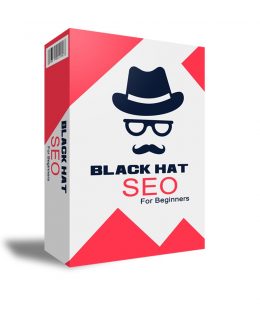
 License Type: Personal Use
License Type: Personal Use  File Type: ZIP
File Type: ZIP
 SKU: 62118
SKU: 62118  Shipping: Online Download
Shipping: Online Download
Sample Content Preview
Introduction
If you have a website from which you are trying to make money, you must have visitors to that site in order to do so.
It is a little like having a store in the local high street or shopping mall. If no-one ever finds your store and wanders inside, then it does not matter
how classy your products are, or how competitive your prices, you will never make any sales until you start pulling in potential customers.
The same rules apply in the world of online business. No visitors to your site is exactly the same as no potential customers walking into your real-world store and no sales.
Therefore, you need to adopt tactics and methods that will make sure that your site enjoys hundreds or perhaps even thousands of visitors a day.
There are lots of different ways of doing this, and once your business becomes better established, you should use every traffic generation tactic that you know of to maximize the number of visitors that you enjoy.
However, some of the quickest and most effective ways of getting people to visit your sales page are the ones that cost money as well, and that may be money that you don’t have available right now.
For example, using the AdWords Pay-Per-Click online advertising program from Google will have visitors landing on your page within a matter of hours, so it is extremely effective in these terms. However, unless you know exactly what you are doing when you create your AdWords campaign, it can be a very expensive way of attracting visitors, and the number of new internet marketers who have been severely ‘burned’ by their first few AdWords campaigns are legion.
There is another factor that you need to consider as well. Online advertising program like AdWords are still extremely effective, but they are becoming less so as people become more aware that when they see ‘Sponsored Links’ on a page, it means that they are looking at paid advertising.
People in general and internet users in particular seem to have an increasing aversion to visiting sites that use paid advertising to promote their products and services, perhaps because they believe that sites that pay to advertise will always be those that are trying to sell them something.
Despite what those of us who run internet-based businesses might like to believe, most people do not surf the internet with the intention of buying anything. They do so to seek information and answers to the questions that they have, and as a general rule they are trying to find that information for free. Considered in the light of this factor, it makes sense that people would avoid clicking on adverts wherever possible.
At the same time, however, the way that these information seekers look for the information that they want is pretty much cast in stone as well. They will open up their favorite search engine, type in the word or phrase that they want to search for and hit the ‘Enter’ key.
This will bring up a page of search engine results that shows them the top ten most popular sites that are related to that phrase on the left-hand side of the page, together with a handful of adverts on the right-hand side.
Extensive recent research has shown that searchers almost always click on the top results on the left-hand side of the page, and then work their way through those top ten results to find what they are looking for.
If they cannot find the information that they are seeking by doing this, then they might click on an advert, or they could move to the second page of the results and look at the natural (organic) search results that are featured in positions 11-20 for the term that they searched.
If you can get your site pages into the top ten or twenty of the natural search engine results, the chances of your being able to pull visitors are very good. Of course, that is everyone else’s objective as well, so the competition for those coveted top ten spots can be extremely fierce.
Despite that competition, you must do everything that you can to get your page featured, and one of the ways that you do this is through the application of what are known as search engine optimization (or SEO) tactics to the creation of your pages. Some such SEO tactics are known as ‘white hat’ tactics, while others are sometimes called ‘gray hat’ and then there are ‘black hat’ SEO tactics. It is with the latter in particular that this book is concerned, so the first thing to look at is, what exactly are black hat SEO tactics?
Just like the movies…
As in the ‘Western’ cowboy movies of old, the concept of black and white hat tactics is supposed to differentiate between the good guys and the bad.
However, it is important to understand who it is that defines those who are the good guys wearing the white hats and the baddies who wear the black.
The first and perhaps most important point to make about those who use black hat tactics is that they are not doing anything that is illegal (at least, the majority of them are not) and in most cases, the tactics they adopt to make sure that their website features well in the search engine results are not even unethical.
However, the search engines have rules about what they deem to be acceptable promotional and marketing practices, and they deem anything that falls outside those rules to be black hat. In other words, those who are using black hat tactics are not necessarily doing anything wrong, it is just that they are breaking or bending the rules that are imposed on the way that they use the internet by Google or Yahoo!.
It is therefore reasonable to ask a few questions here.
First, why do the mega-rich corporations like Google or Yahoo! believe that they have any right to impose rules on other internet users? They do not own the internet, although behavior such as imposing rules might suggest that they believe otherwise.
Secondly, who are these rules that are fairly arbitrarily created by the search engine overlords designed to benefit?
Of course, the search engine people will proclaim that they impose these rules to protect their users, and to ensure that they enjoy a high-quality experience whenever they use that particular search engine.
There is some truth in this, because the quality of the results that the search engines return has definitely been improving over the past couple of years.
That being said, however, there is no doubt that the major beneficiaries of this imposition of rules and regulations have been the owners and shareholders of sites like Google and Yahoo!
For this reason, there is nothing intrinsically wrong with applying black hat tactics to the site optimization process, although it is, of course, up to each individual site owner to decide what is acceptable to them and what is not.
As intimated earlier, there are some serious black hat experts whose practices and behavior do border on the illegal, but this book is not concerned with those sorts of tactics, simply because they are way too dangerous for any black hat beginner to get involved in.
- License: Personal Use
- Category:Ebooks
- Tags:2018 Ebooks Personal Use







